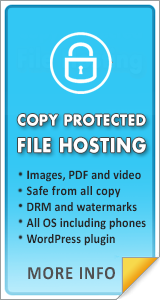
Ad Blocking Software
Ad blocking or ad filtering is a software capability for removing or altering online advertising in a web browser to prevent them from being seen and thus non-obtrusive. The most popular ad blockers function as web browser extensions. The more sophisticated ad blocking software control the appearance of advertisements by using blacklists, whitelists, and regular expression filters. Some antivirus software can act as an ad blocker. Filtering by Internet Service Providers (ISP) or national governments is increasingly common.
Access Control Software
Access control regulates who or what can view or use resources in a computing environment and a fundamental concept in security that minimizes risk to the business and organization resources. Access control systems perform identification of users by evaluating required login credentials, personal identification numbers, security tokens or other authentication factors.
Anti-Spam Software
Anti-spam software uses a set of protocols to determine unsolicited and unwanted messages and prevent those messages from getting to a user's inbox. Anti-spam techniques can be broken into four broad categories: those that require actions by individuals, those that can be automated by email administrators, those that can be automated by email senders and those employed by researchers and law enforcement officials.
Anti-Spy Software
Anti-spyware software is designed to prevent and detect unwanted spyware program installations and to remove those programs if installed. Detection may be either rules-based or based on downloaded definition files that identify currently active spyware programs..
Anti-Virus Software
Anti-virus software is designed to detect, prevent and remove software viruses and other malicious software like worms and trojans. Traditional antivirus software relies heavily upon signatures to identify malware. When malware is reported, it is analyzed by researchers or by dynamic analysis systems. Once it is determined to be malware, a proper signature of the file is extracted and added to the signatures database of the antivirus software.
Covert Surveillance Software
Covert surveillance software is used for monitoring the behavior and activities of people for the purpose of influencing, managing, directing or protecting them or the devices that they are using. Covert surveillance can be used as a form of business intelligence, which enables enties to protect their data and also better tailor their products and/or services to their customers.
Document Protection Software
Document protection software can employ a variety of different techniques for limiting and preventing access to document files. Almost all solutions utilize encryption with added checks for user rights such as password protection or other digital rights management (DRM) techniques for identifying the individual user.
Encryption Software
Encryption software enables encryption and decryption of a data stream so that it is secure and inaccessible to unauthorized users. Encryption can be used on almost any type of digital file. Data in transit generally uses public key ciphers, and data at rest generally uses symmetric key ciphers.
Network Monitoring Software
Network monitoring software is designed to monitor and manage the network traffic flow over a network. It is mainly used by network administrators and security staff to monitor the operations of a network. It can include fault analysis, performance management, provisioning of networks and maintaining the quality of service.
Parental Control Software
Parental control software allows parents to restrict the access of content to their children for the use of the Internet, mobile phones and games. The controls can assist parents in their ability to restrict certain content viewable by their children that they deem inappropriate for their age, maturity level or feel is aimed more at an adult audience.
Web Browser Software
Web Browser software is used for accessing information on the World Wide Web. Each individual web page, image and video is identified by a distinct Uniform Resource Locator (URL), enabling web browsers to retrieve those resources from a web server and display them on the user's desktop.
Web Server Software
Web server software allows computers to act as web servers or modifies existing server software for specialist tasks. Any computer can be turned into a web server by installing server software and connecting the machine to the Internet.





